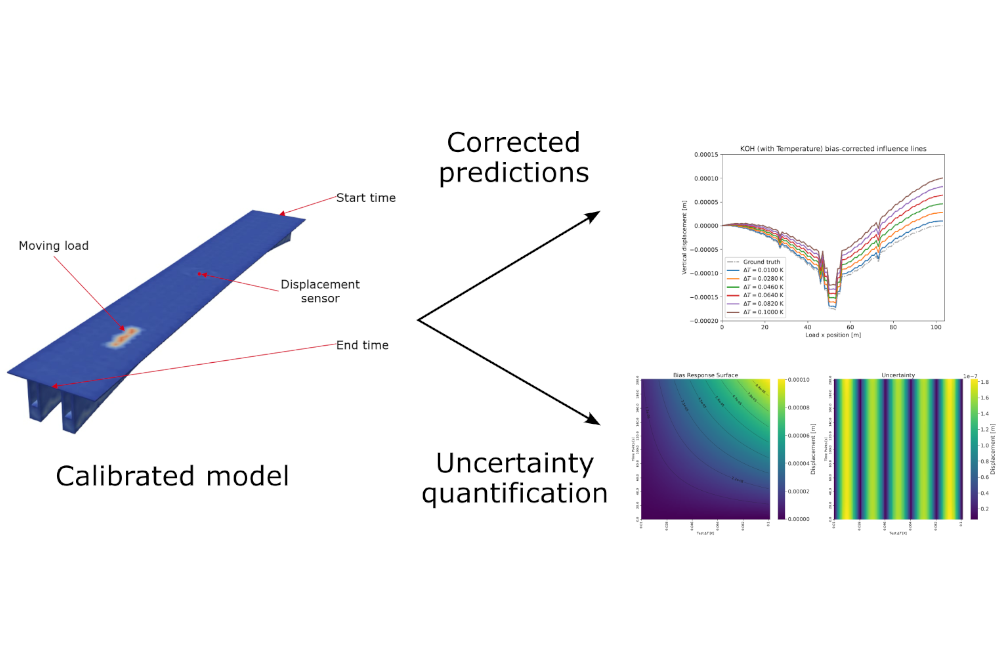
Schematic illustration showing how the extended digital twin model enables corrected predictions and improved uncertainty quantification.
Source: BAM
Digital twins—high-fidelity virtual representations of physical systems—are increasingly used to support decision-making in engineering, particularly for complex infrastructure such as bridges. Their utility, however, depends on their ability to accurately and reliably reflect real-world behavior. A key aspect in achieving this fidelity is the quantification and management of uncertainty in the digital twin's predictions.
One of the main challenges arises from model bias, which occurs when the computational model systematically deviates from the actual behavior of the physical structure. This discrepancy can significantly compromise the reliability of the digital twin and lead to misleading predictions. Traditional Bayesian updating methods, while effective for identifying the parameters that govern the model, often fail to account for model bias—resulting in overconfident and potentially inaccurate outputs. This study investigates two advanced approaches for identifying and correcting model bias in the context of digital twins for bridges: a modularized version of the Kennedy and O’Hagan framework, and a method based on Orthogonal Gaussian Processes. These approaches are systematically compared against classical Bayesian inference techniques using a set of representative benchmark problems.
To further enhance their performance, two novel extensions are proposed: (1) the use of noise-aware kernels that allow for more realistic modeling of unknown sources of error, and (2) the integration of additional variables—external to the computational model—into the bias term. This latter feature enables the inclusion of supplementary system knowledge, such as environmental effects, without requiring modifications to the original model. For instance, temperature-induced variations in a bridge’s static response can be quantified without altering the underlying simulation model. The results demonstrate that these enhanced methodologies not only improve prediction accuracy but also provide a more robust quantification of uncertainty. This contributes to the development of more trustworthy and informative digital twins, ultimately supporting safer and more effective management of critical infrastructure. This work was realized as part of the “Schwerpunktprogramm SPP2388: SPP Hundert plus” for the extension of the remaining lifetime of bridges through monitorization and in collaboration with the Zuse Institute Berlin (ZIB) and the Technical University of Munich (TUM).
Model Bias Identification for Bayesian Calibration of Stochastic Digital Twins of Bridges
Daniel Andrés Arcones, Martin Weiser, Phaedon-Stelios Koutsourelakis, Jörg F. Unger
Applied Stochastic Models in Business and Industry, 2024


